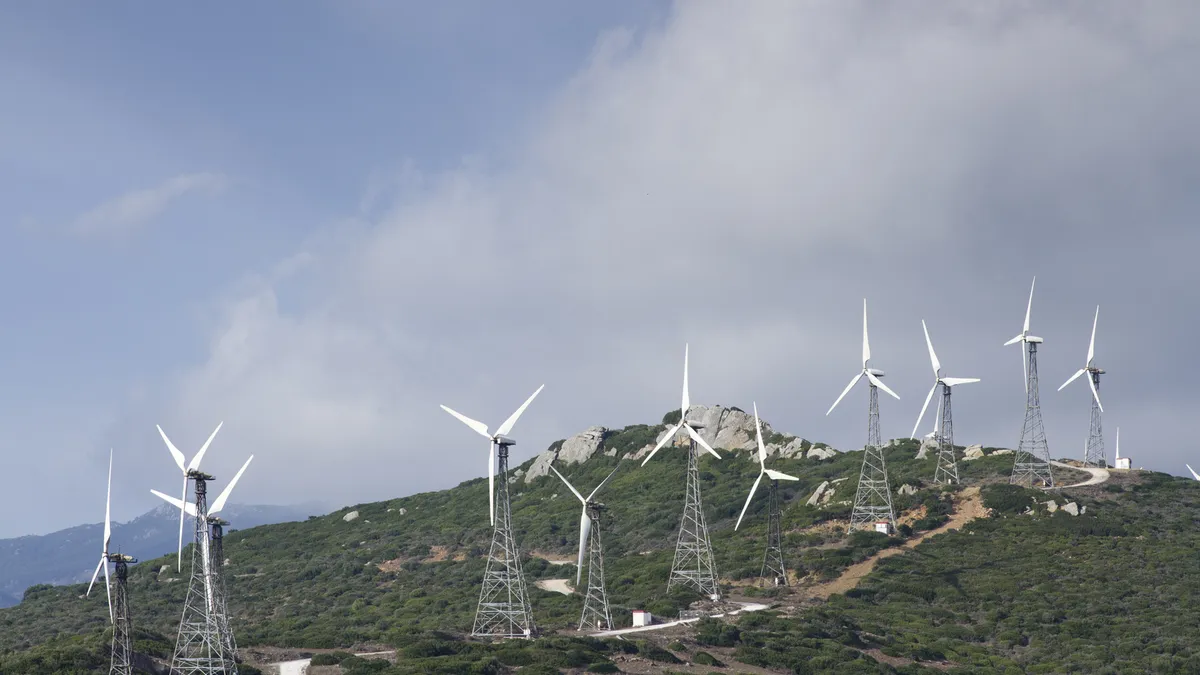The Federal Reserve, for the first time Monday, cited climate change as a risk in its semiannual Financial Stability Report.
But acknowledging the risk is not enough, Fed Governor Lael Brainard said in a statement, calling on financial companies to show more transparency in how that risk translates to pricing.
"Increased transparency through improved measurement and more standardized disclosures will be crucial," Brainard said in a statement, according to Reuters. "It is vitally important to move from the recognition that climate change poses significant financial stability risks to the stage where the quantitative implications of those risks are appropriately assessed and addressed."
Above all, a lack of understanding or disclosure of the extent of climate risk exposure could cause abrupt pricing changes and create a difficult-to-predict ripple effect, Brainard said.
"Acute hazards, such as storms, floods, or wildfires, may cause investors to update their perceptions of the value of real or financial assets suddenly," Brainard said in comments attached to the report. "Chronic hazards, such as slow increases in mean temperatures or sea levels, or a gradual change in investor sentiment about those risks, introduce the possibility of abrupt tipping points or significant swings in sentiment."
By that logic, real estate value may fall sharply in areas where sea levels are rising if more frequent or intense hurricanes occur. And a large-scale event could trigger sales at severely low prices. Volatility could pass on to real estate loans, mortgage-backed securities and the companies that hold them.
The Fed vowed to evaluate and invest in deepening its understanding of the vulnerabilities to financial stability that climate change presents. It did not specify how it would encourage a "quantitative" analysis of climate change’s consequences. But Brainard asserted that climate change’s potential to affect price stability puts the crisis squarely within one of the prongs of the Fed’s dual mission (the other prong being maximum employment).
"Climate change adds a layer of economic uncertainty and risk that we have only begun to incorporate into our analysis of financial stability," the Fed said Monday.
With that acknowledgment, the central bank became the latest regulator in the U.S. to urge the financial sector to give climate change greater consideration. New York’s Department of Financial Services pushed banks last month to integrate climate change-related financial risks into their business strategies, risk management processes and governance frameworks.
A Commodity Futures Trading Commission (CFTC) subcommittee in September suggested that forcing businesses to pay for their greenhouse gas emissions would be the most efficient way to ensure financial markets reduced climate risk. The panel laid out 53 nonbonding resolutions that could serve to influence policy under a Biden administration.
Brainard, too, has been floated as a potential member of the Biden administration. The Washington Post speculated this week that she is a leading candidate for Treasury secretary.
The Fed’s climate declaration comes as another of North America’s big banks — TD — committed Monday to net-zero carbon emissions by 2050 for the projects it finances, in alignment with the Paris Agreement. Lenders such as JPMorgan Chase and Barclays pledged this year to meet that benchmark.
TD also joined the Partnership for Carbon Accounting Financials, a Dutch-led consortium that intends to standardize the way banks measure and reduce their climate impact. Morgan Stanley, Citi and Bank of America joined the group in July.
The Toronto-based bank said it needs to determine the current level of emissions tied to each sector of its loan portfolio.
"We need to set our baseline — not only for our own operations, but also for our financed emissions," Nicole Vadori, the bank’s head of environment, told American Banker. "Once we do that, we can then start breaking down that 2050 target into manageable chunks."
Vadori said the bank’s operations have been carbon-neutral since 2010 — the first North American bank to claim so, it acknowledged in a press release.















